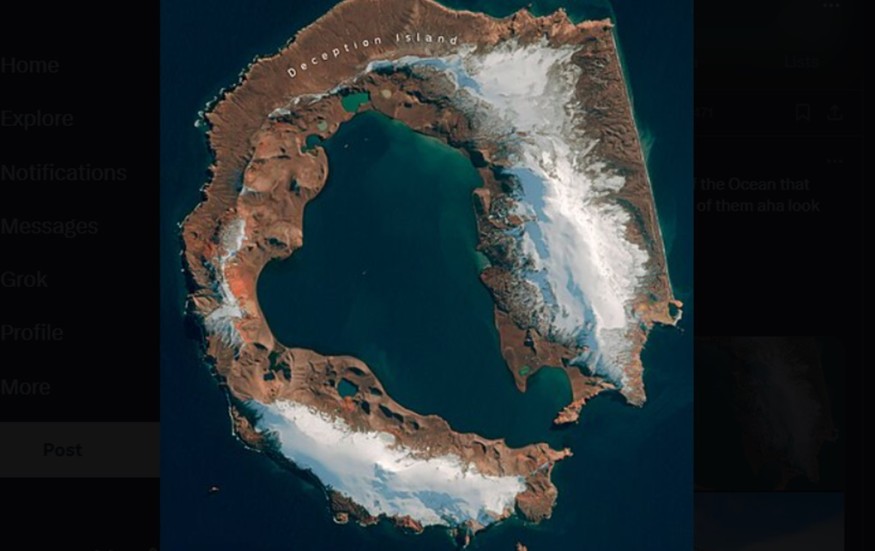
Deception Island, located in the Southern Ocean near mainland Antarctica, is a unique and fascinating landform with a storied history.
Shaped like a horseshoe, the island is a semi-submerged volcanic caldera formed by one of Antarctica's most significant eruptions around 4,000 years ago. Today, it serves as a natural harbor, scientific hub, and sanctuary for wildlife, making it a vital part of the Antarctic region.
The Hidden Lagoon Inside Deception Island's Volcanic Rim
The island is part of the South Shetland Islands, situated about 65 miles from the Antarctic mainland in the Drake Passage, Britannica said.
This stretch of water, often called the "iceberg graveyard," is notorious for its rough conditions and the disintegration of massive icebergs that drift from Antarctic ice sheets.
Deception Island's most striking feature is its hidden lagoon, known as Port Foster, which is accessible only through a narrow opening in the caldera's rim called Neptune's Bellows. From the sea, the island appears as a solid landmass, but this deceptive facade hides its welcoming harbor.
First discovered in 1820, Neptune's Bellows quickly became a refuge for sailors facing the harsh storms of the Southern Ocean.
The sheltered waters of Port Foster made the island a critical stop for explorers and later, a base for commercial whaling and sealing operations during the early 20th century.
Monitoring Deception Island's Dormant but Active Volcano
According to LiveScience, the volcanic eruption that created Deception Island was massive, spewing up to 14 cubic miles of ash and magma into the atmosphere, making it the largest eruption in Antarctica in the last 12,000 years.
Since then, the island has experienced at least 20 smaller eruptions, with the last major activity occurring in 1970. Although the volcano has been quiet since 2015, it remains active, and scientists closely monitor its behavior.
Today, Deception Island hosts two permanent research stations operated by Argentina and Spain.
These facilities study the island's geology, volcanic activity, and unique ecosystems. The island is also home to tens of thousands of chinstrap penguins, along with various seals and seabirds, making it a hotspot for wildlife research.
Despite its remote location, Deception Island attracts thousands of tourists annually. Visitors arrive on cruise ships to explore its volcanic springs, historic sites, and breathtaking landscapes.
Its mix of natural beauty, scientific significance, and historical importance make it one of the most remarkable destinations in Antarctica.
© 2025 NatureWorldNews.com All rights reserved. Do not reproduce without permission.





